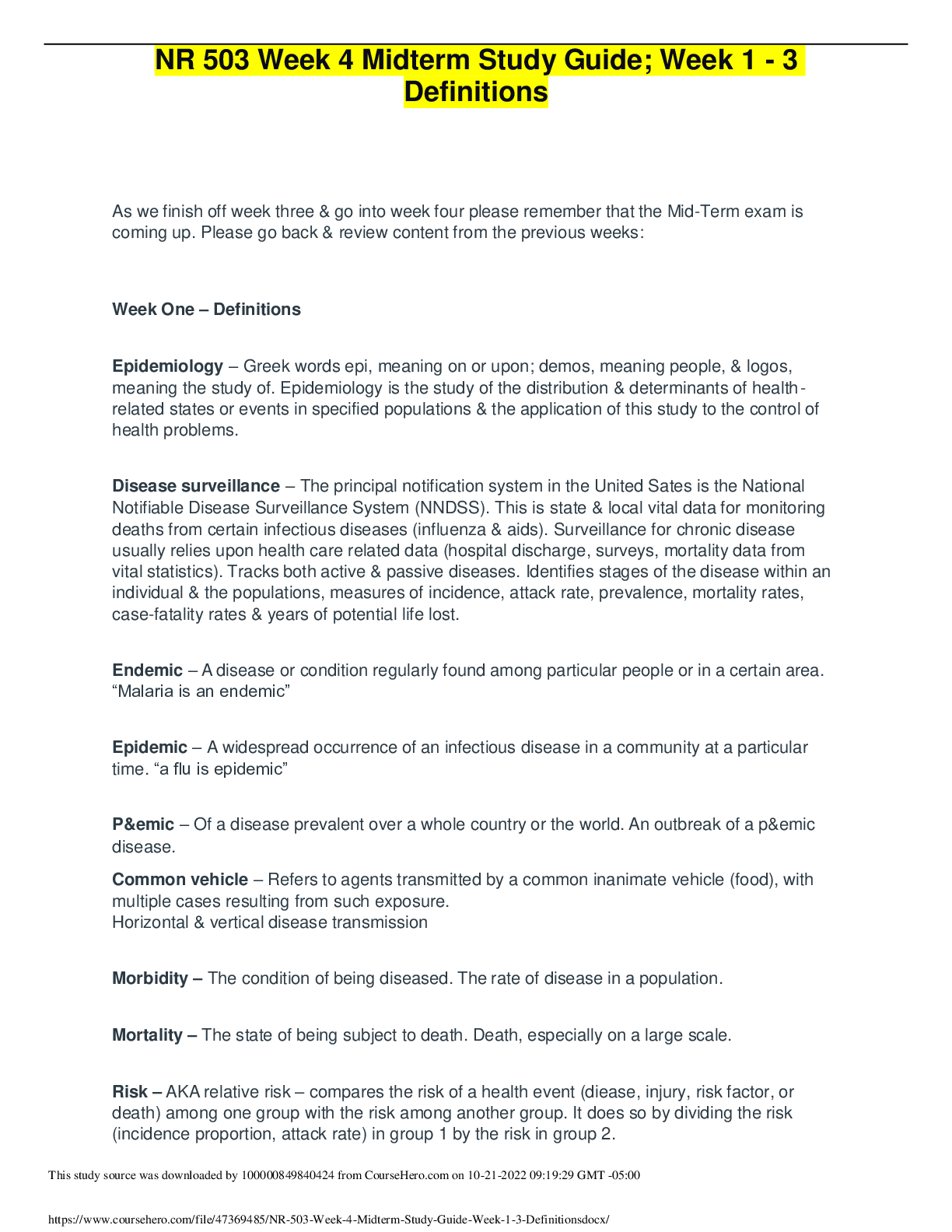
ATI PEDIATRICS PRACTICE QUESTIONS WITH CORRECT ANSWERS
*NURSING > STUDY GUIDE > Chamberlain College of Nursing, NR 503 Week 4 Midterm Study Guide. Week 1 - 3 Definitions (All)
Chamberlain College of Nursing, NR 503 Week 4 Midterm Study Guide. Week 1 - 3 Definitions.As we finish off week three & go into week four please remember that the Mid-Term exam is coming up. Please go ... back & review content from the previous weeks: Week One – Definitions Epidemiology – Greek words epi, meaning on or upon; demos, meaning people, & logos, meaning the study of. Epidemiology is the study of the distribution & determinants of health-related states or events in specified populations & the application of this study to the control of health problems. Disease surveillance – The principal notification system in the United Sates is the National Notifiable Disease Surveillance System (NNDSS). This is state & local vital data for monitoring deaths from certain infectious diseases (influenza & aids). Surveillance for chronic disease usually relies upon health care related data (hospital discharge, surveys, mortality data from vital statistics). Tracks both active & passive diseases. Identifies stages of the disease within an individual & the populations, measures of incidence, attack rate, prevalence, mortality rates, case-fatality rates & years of potential life lost. Endemic – A disease or condition regularly found among particular people or in a certain area. “Malaria is an endemic” Epidemic – A widespread occurrence of an infectious disease in a community at a particular time. “a flu is epidemic” P&emic – Of a disease prevalent over a whole country or the world. An outbreak of a p&emic disease. Common vehicle – Refers to agents transmitted by a common inanimate vehicle (food), with multiple cases resulting from such exposure. Horizontal & vertical disease transmission Morbidity – The condition of being diseased. The rate of disease in a population. Mortality – The state of being subject to death. Death, especially on a large scale. Risk – AKA relative risk – compares the risk of a health event (diease, injury, risk factor, or death) among one group with the risk among another group. It does so by dividing the risk (incidence proportion, attack rate) in group 1 by the risk in group 2. [Show More]
Last updated: 3 years ago
Preview 1 out of 1 pages

Buy this document to get the full access instantly
Instant Download Access after purchase
Buy NowInstant download
We Accept:

Can't find what you want? Try our AI powered Search
Connected school, study & course
About the document
Uploaded On
Feb 27, 2021
Number of pages
1
Written in
All
This document has been written for:
Uploaded
Feb 27, 2021
Downloads
0
Views
89
Scholarfriends.com Online Platform by Browsegrades Inc. 651N South Broad St, Middletown DE. United States.
We're available through e-mail, Twitter, Facebook, and live chat.
FAQ
Questions? Leave a message!
Copyright © Scholarfriends · High quality services·